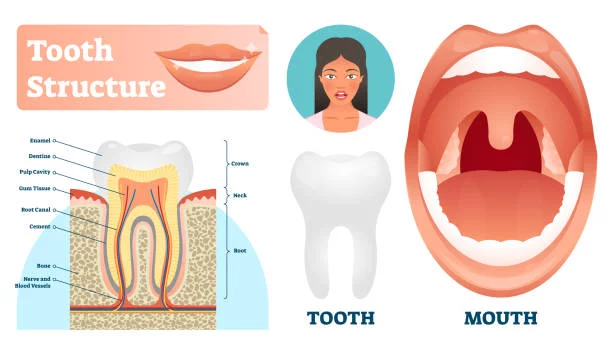Charcot-Marie-Tooth disease (CMT) is one of the most common inherited neurological disorders, yet it remains relatively unknown to many. This condition affects the peripheral nerves, which are responsible for movement and sensation in the limbs. Understanding CMT is essential not only for those diagnosed but also for their families, caregivers, and anyone interested in neurological health.
What Is Charcot-Marie-Tooth Disease?
Charcot-Marie-Tooth disease is a group of inherited disorders that damage the peripheral nerves — the nerves outside the brain and spinal cord. These nerves control muscle movement and transmit sensory information such as touch, temperature, and pain from the limbs back to the brain.
CMT is named after the three doctors who first described it in 1886: Jean-Martin Charcot, Pierre Marie, and Howard Henry Tooth. Although it has been known for over a century, the disease still presents challenges in diagnosis and management due to its varied symptoms and genetic complexity.
Causes and Genetics
CMT is a genetic condition caused by mutations in genes that affect the structure and function of peripheral nerves. It is inherited in different patterns, including autosomal dominant, autosomal recessive, and X-linked forms, meaning it can be passed down from one or both parents or linked to the X chromosome.
There are several types of CMT, each linked to specific gene mutations. The most common type, CMT1A, results from a duplication of the PMP22 gene. The type and severity of symptoms can vary greatly even among family members, making genetic counseling and testing important for diagnosis and family planning.
Symptoms and Signs
The symptoms of Charcot-Marie-Tooth disease typically begin in adolescence or early adulthood but can appear at any age. They usually progress slowly and affect both sides of the body symmetrically.
Common symptoms include:
- Muscle Weakness: Particularly in the lower legs and feet, leading to difficulty walking or frequent tripping.
- Foot Deformities: Such as high arches (pes cavus) and hammertoes.
- Loss of Sensation: Reduced ability to feel heat, cold, or pain, especially in the feet and hands.
- Balance Problems: Due to sensory loss and muscle weakness.
- Hand Weakness: Difficulty with fine motor skills like buttoning a shirt or writing.
- Reduced Reflexes: Especially in the ankles.
Because these symptoms develop gradually, many people initially attribute them to other causes such as injury or aging.
Diagnosis
Diagnosing CMT can be challenging because its symptoms overlap with other neurological disorders. A thorough clinical evaluation by a neurologist is essential, including:
- Medical and Family History: To identify inherited patterns.
- Physical Examination: To assess muscle strength, reflexes, and sensory function.
- Electromyography (EMG) and Nerve Conduction Studies: To evaluate the electrical activity of muscles and the speed of nerve signals.
- Genetic Testing: To identify specific mutations responsible for CMT.
Early and accurate diagnosis can help in managing symptoms effectively and planning for the future.
Treatment and Management
Currently, there is no cure for Charcot-Marie-Tooth disease, but many treatments can help manage symptoms and improve quality of life. Management strategies focus on maintaining muscle strength and flexibility, preventing complications, and supporting daily activities.
Physical Therapy and Exercise
Regular physical therapy can help maintain muscle strength, improve mobility, and prevent joint deformities. Low-impact exercises like swimming or cycling are often recommended to avoid overuse injury.
Occupational Therapy
Occupational therapists assist patients in adapting their environment and learning techniques to perform daily tasks more easily. They may recommend assistive devices such as braces, splints, or custom shoes to support weak muscles and improve balance.
Pain Management
Many people with CMT suffer from neuropathic pain, which can be managed with pain relievers, specialized nerve pain medications, and alternative treatments such as acupuncture, all provided under the guidance of a healthcare professional. If you’re searching for neuropathy treatment near you, it’s important to consult with a qualified specialist who can recommend the best options tailored to your condition.
Surgery
In some cases, orthopedic surgery may be necessary to correct foot deformities or improve walking ability.
Lifestyle Adjustments
Patients are advised to avoid activities that cause excessive fatigue or injury. Regular follow-ups with healthcare providers help monitor disease progression and adjust care plans.
Living with Charcot-Marie-Tooth Disease
Living with CMT can be challenging, but many individuals lead fulfilling lives with the right support. Emotional and psychological health is just as important as physical care. Support groups and counseling can provide valuable resources and community connection.
Awareness and education are critical, both for those affected and for the public. The more people understand CMT, the better we can foster empathy, improve care, and promote research.
Research and Future Directions
Research into Charcot-Marie-Tooth disease is ongoing, with promising developments in gene therapy and novel drug treatments. Scientists are working to better understand the genetic causes and how to repair or protect damaged nerves.
Clinical trials and patient registries are crucial in advancing knowledge and finding effective therapies. Patients and families are encouraged to stay informed about research opportunities.
In Conclusion
Charcot-Marie-Tooth disease is a complex and variable neurological disorder that requires a comprehensive approach to diagnosis and management. While there is no cure yet, advances in medicine and therapy continue to improve the lives of those affected. If you or a loved one experience symptoms suggestive of CMT, seeking medical advice early is key to gaining support and care.
By spreading awareness and supporting research, we can help pave the way toward a brighter future for all living with Charcot-Marie-Tooth disease.

Lexy Summer is a talented writer with a deep passion for the art of language and storytelling. With a background in editing and content creation, Lexy has honed her skills in crafting clear, engaging, and grammatically flawless writing.



